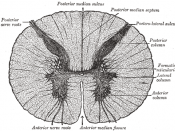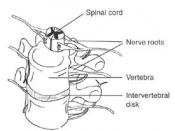You wake up, groggy. Your eyes focus on worried family members gathered around you at your hospital bed. You don't know what's going on, how you got there, or why they look worried. Gradually you realize you are in a hospital room. On their faces, relief that you are awake seems to be mixed with something else. You raise your arm to take your wife's hand, but nothing happens. Puzzled, you try again. What's going on? You try moving other parts of your body. Nothing happens. You try to speak, but something is in your throat.
Panic sets in. You'd scream if you could. The doctor comes in. You listen to the gentle voice explaining what has happened to you. The words "spinal cord damage,"� "paralysis,"� "hope,"� "new treatments all the time,"� and "a machine is breathing for you"� spin in your brain. The gentle voice does nothing to soften the meaning of the words.
Any damage to the spinal cord is a very complex injury. People who are injured are often confused when trying to understand what it means to be a person with a spinal cord injury. Each injury is different and can affect the body in many different ways. A person's injury is described by its level and type.
To best understand spinal cord injuries and paralysis you must first understand what the normal spinal cord is. The spinal cord is a part of your nervous system. It is the largest set of nerves in the body. The spinal cord carries nerve impulses to and from the brain to the rest of the body. The brain and the spinal cord constitute the central nervous system.
The nerves that lie within the spinal cord are upper motor neurons. They carry the messages back and forth from the brain...


